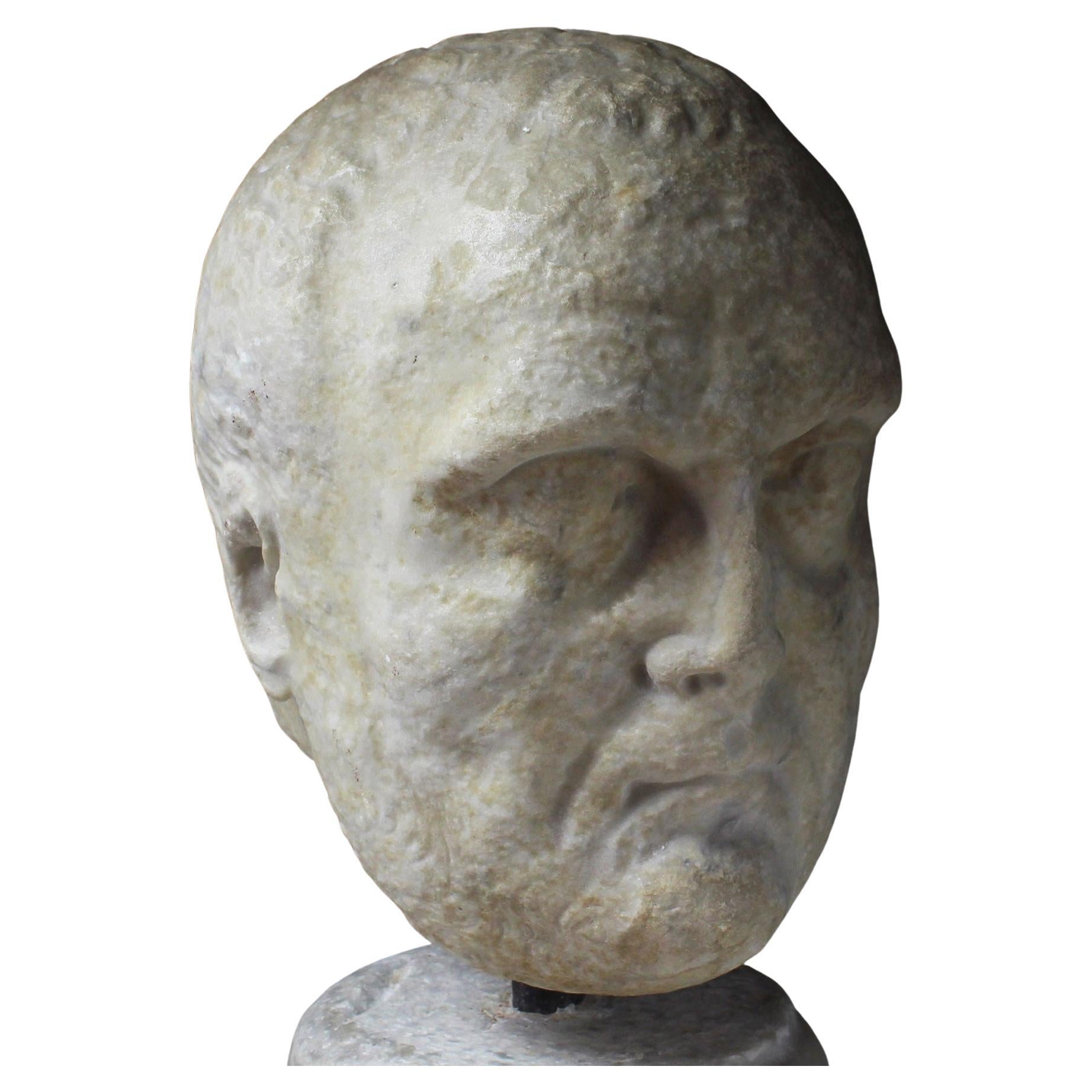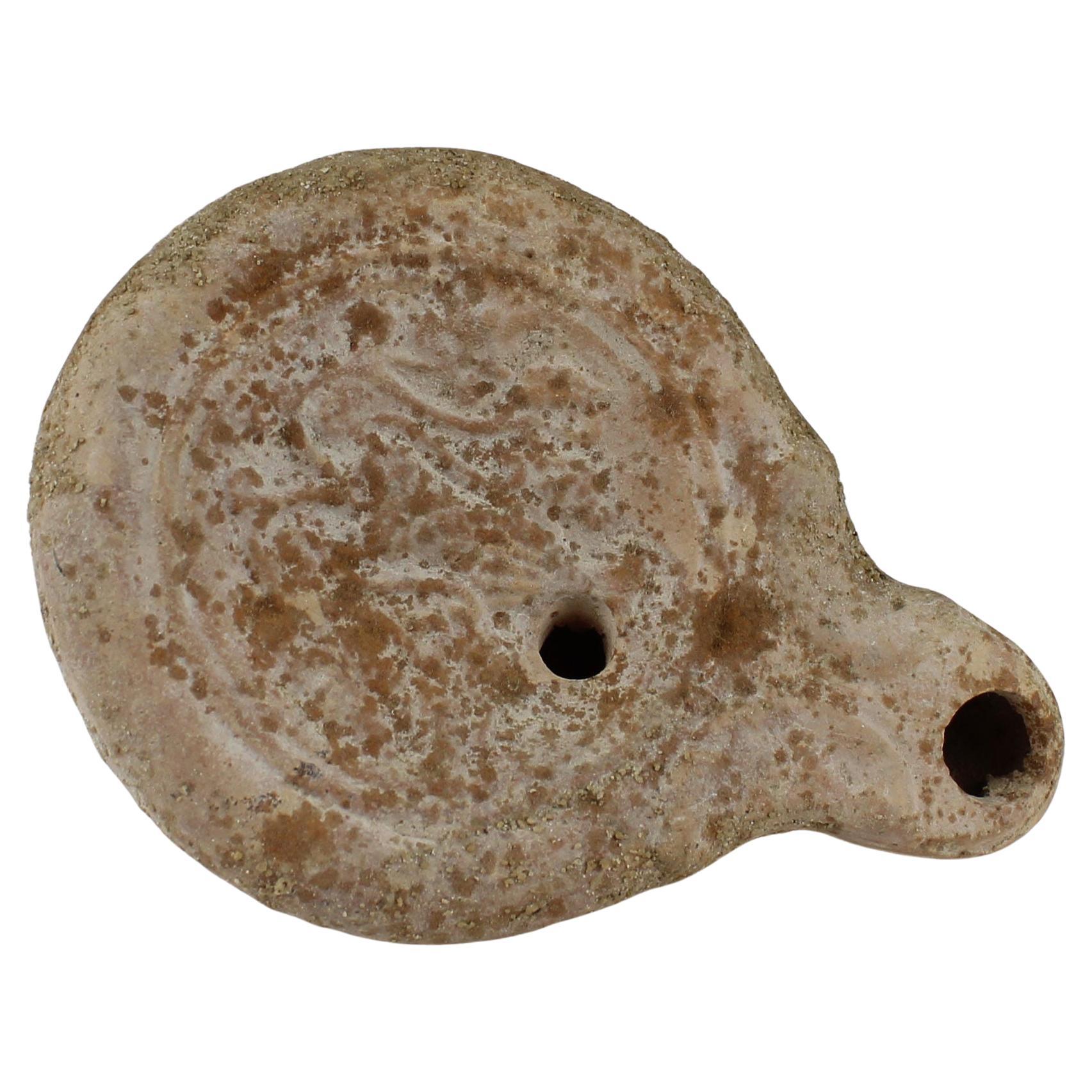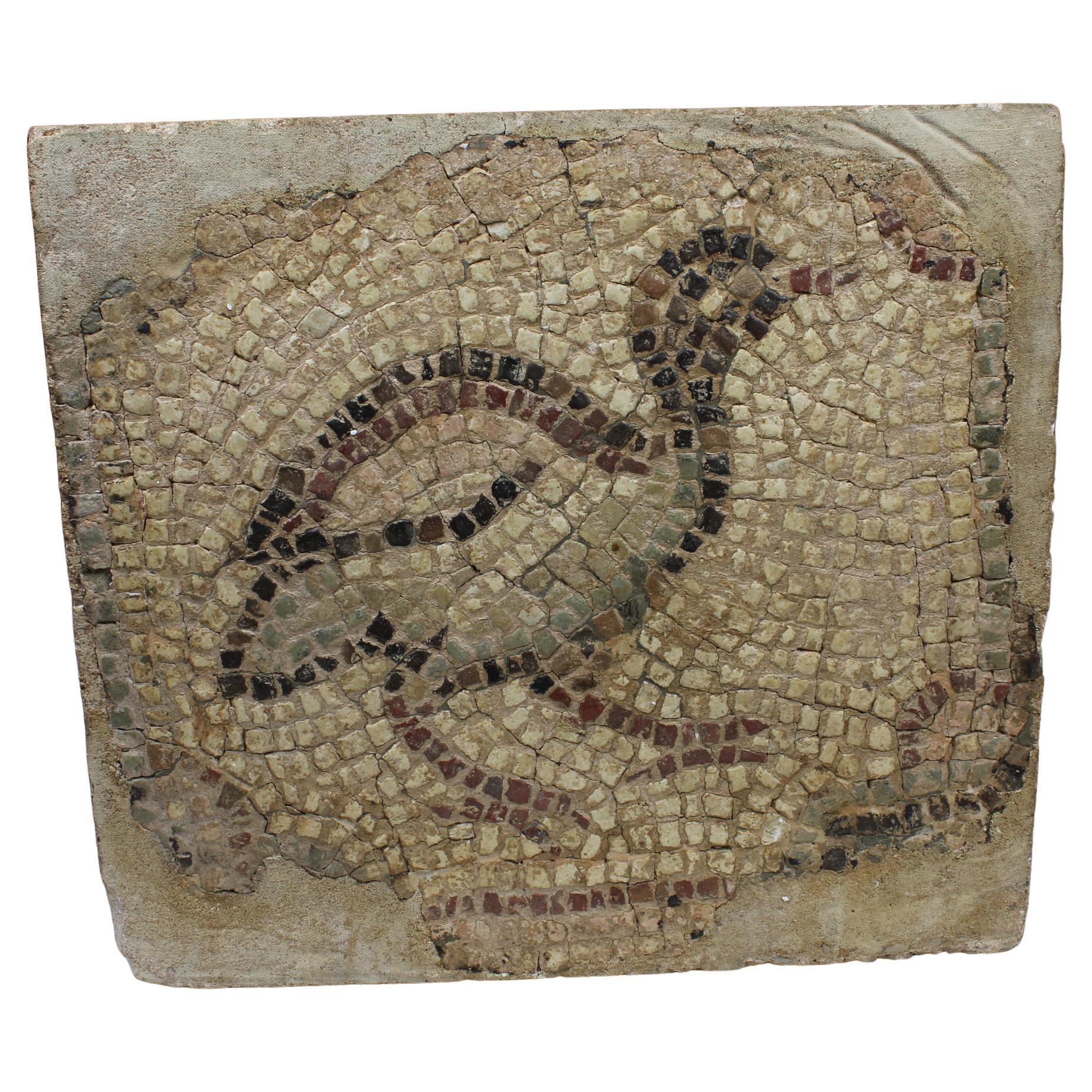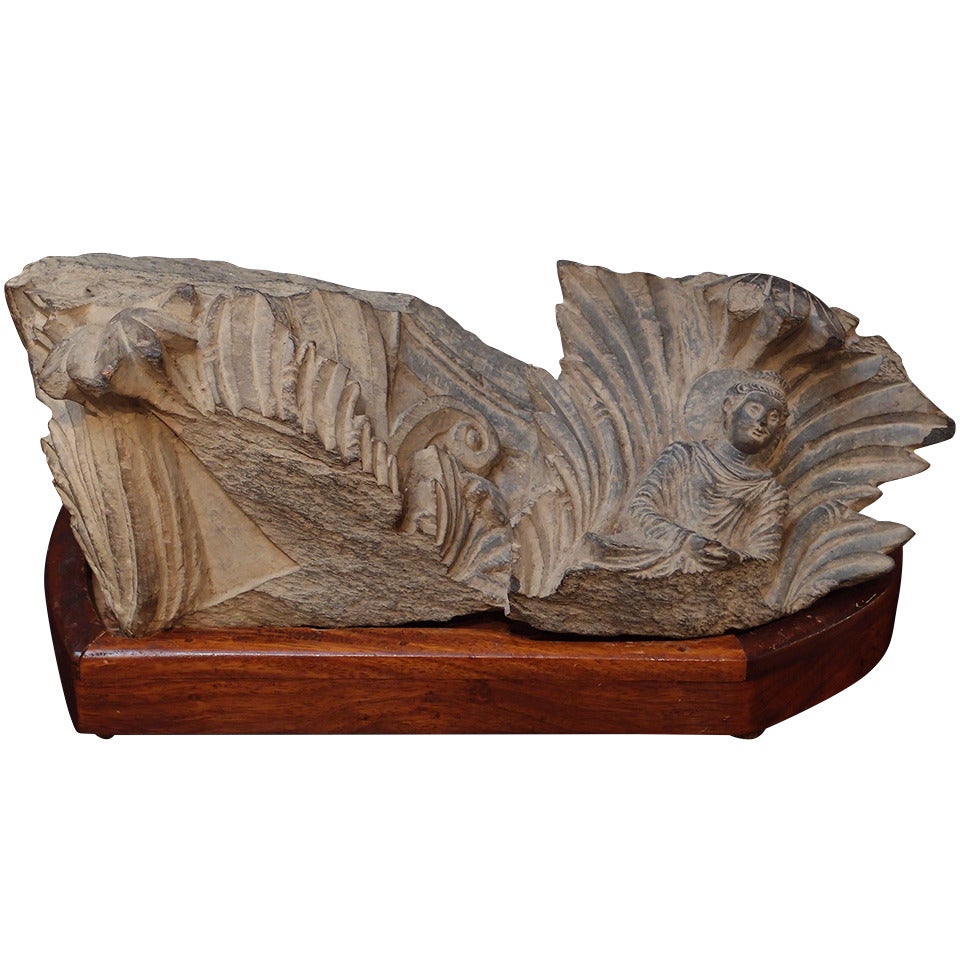Items Similar to Roman military cheek piece of a helmet fragment with Jupiter’s eagle
Want more images or videos?
Request additional images or videos from the seller
1 of 8
Roman military cheek piece of a helmet fragment with Jupiter’s eagle
About the Item
ITEM: Military cheek piece of a helmet fragment with Jupiter’s eagle
MATERIAL: Bronze
CULTURE: Roman
PERIOD: 3rd Century A.D
DIMENSIONS: 180 mm x 123 mm
CONDITION: Good condition
PROVENANCE: Ex Alison Barker private collection, a retired London barrister, acquired between 1960s – 1990s
BIBLIOGRAPHY: RUCINSKI, E., Get the picture?: Iconography of cheek pieces on Roman Imperial cavalry helmets, Journal of Roman Military Equipment Studies
Roman military equipment is famous for its abundance of depictions rife with symbolical content. The so-called cavalry sports equipment, which used to be seen as being solely parade armour, can be distinguished from the infantry equipment not only by its function, but also by its design. There are numerous surviving heavily ornamented parts of Roman cavalry equipment and a number of studies have been published on their purpose and decoration. Whether the ornamented equipment belonged to parade armour or was also worn in battle is still under discussion. One of those groups contains the helmets, of which a relatively large number of different variations exist. Apart from the calotte with its neck guard, the loosely attached cheek pieces were also an essential part of the helmet. Cheek pieces as protective elements were used both for infantry and cavalry helmets. Although in some cases it is still difficult to attribute individual examples to the cavalry, due to the higher amount of remains we can be relatively certain that the majority of helmets did indeed belong to the cavalry.
In Greek and Roman mythology, the eagle served as Jupiter’s personal messenger, and it is said to have carried the youth Ganymede to Olympus, where he served as the gods’ cupbearer. Pliny the Elder also describes the eagle as one of the signa militaria, or “military symbols” (NH 10.6). As a symbol of Jupiter’s authority, an eagle would be set free during the consecration of an emperor—a ritual that culminated in his apotheosis. By flying into the air, the eagle was believed to carry the soul of the deified emperor to heaven, thus securing him a place among the gods.
Comes with Certificate of Authenticity and Export license (If you live outside the European Union, We will have to apply for an export licence for your country and shipping will take 3 to 5 weeks.)
- Dimensions:Height: 7.09 in (18 cm)Width: 4.85 in (12.3 cm)Depth: 0.2 in (5 mm)
- Style:Classical Roman (Of the Period)
- Materials and Techniques:
- Place of Origin:
- Period:
- Date of Manufacture:3rd Century A.D
- Condition:
- Seller Location:EL CAMPELLO, ES
- Reference Number:1stDibs: LU7382235239022
About the Seller
5.0
Vetted Seller
These experienced sellers undergo a comprehensive evaluation by our team of in-house experts.
Established in 2011
1stDibs seller since 2022
8 sales on 1stDibs
- ShippingRetrieving quote...Ships From: El Campello, Spain
- Return PolicyA return for this item may be initiated within 60 days of delivery.
More From This SellerView All
- Roman Trapezophorum 'Table Leg' with the Head of a PantherLocated in EL CAMPELLO, ESITEM: Trapezophorum (table leg) with the head of a panther MATERIAL: Marble CULTURE: Roman PERIOD: 2nd – 3rd Century A.D DIMENSIONS: 492 mm x 170 mm x 200 mm CONDITION: Good con...Category
Antique 15th Century and Earlier Classical Roman Antiquities
MaterialsMarble
- Roman portrait head of a PatricianLocated in EL CAMPELLO, ESITEM: Portrait head of a Patrician MATERIAL: Marble CULTURE: Roman PERIOD: 1st Century B.C DIMENSIONS: 250 mm x 175 mm x 215 mm (without stand), Life-siz...Category
Antique 15th Century and Earlier European Classical Roman Antiquities
MaterialsMarble
- Roman statuette of Eros-HarpocratesLocated in EL CAMPELLO, ESITEM: Statuette of Eros-Harpocrates MATERIAL: Bronze CULTURE: Roman PERIOD: 1st Century B.C – 1st Century A.D DIMENSIONS: 82 mm x 31 mm CONDITION: Good condition PROVENANCE: Ex Ameri...Category
Antique 15th Century and Earlier Italian Classical Roman Antiquities
MaterialsBronze
- Roman oil lamp with leaves and fruitLocated in EL CAMPELLO, ESITEM: Oil lamp with leaves and fruit, Type Bussiere B III 1 MATERIAL: Terracotta CULTURE: Roman PERIOD: 1st – 2nd Century A.D DIMENSIONS: 20 mm x 65 mm x 90 mm CONDITION: Good condit...Category
Antique 15th Century and Earlier Italian Classical Roman Antiquities
MaterialsPottery
- Roman mosaic depicting a birdLocated in EL CAMPELLO, ESITEM: Mosaic depicting a bird MATERIAL: Tesserae CULTURE: Roman PERIOD: 3rd Century A.D DIMENSIONS: 400 mm x 440 mm x 40 mm CONDITION: Good condition PROVENANCE: Ex Swiss private col...Category
Antique 15th Century and Earlier Italian Classical Roman Antiquities
MaterialsMarble
- Roman oil lamp, Type ‘Herodian’, Kennedy 3, Hadad 4Located in EL CAMPELLO, ESITEM: Oil lamp, Type ‘Herodian’, Kennedy 3, Hadad 4 MATERIAL: Terracotta CULTURE: Roman, Judaea PERIOD: 1st Century B.C – 2nd Century A.D DIMENSIONS: 25 mm x 62 mm x 82 mm CONDITION: Good condition PROVENANCE: Ex Jerusalem private collection, acquired between 1975 – 1990. Comes with Certificate of Authenticity and Export license (If you live outside the European Union, We will have to apply for an export licence for your country and shipping will take 3 to 5 weeks.) Oil lamps used during the time of Herod, which falls within the period of the Second Temple in ancient Judea...Category
Antique 15th Century and Earlier Israeli Classical Roman Antiquities
MaterialsPottery
You May Also Like
- Gandharan Column Capital Fragment with an Image of the BuddhaLocated in Austin, TXA bold and expressive Gandharan carved gray schist column capital fragment, circa 2nd - 3rd century, ancient region of Gandhara. The fragment of a c...Category
Antique 15th Century and Earlier Pakistani Hellenistic Sculptures
MaterialsSchist
- An Over Life-Size Powerful Roman Male Portrait Head of Constantine the GreatLocated in London, GBAn Over Life-Size Powerful Roman Male Portrait Head of Constantine the Great (c.272 - 337) Wearing the ‘Imperial Oak Wreath’ the decorative border of his ‘tunic’ can still be clearly seen on the left hand side Marble Italy Early 4th Century AD SIZE: 38cm high, 24.5cm wide, 25cm deep - 15cm high, 9¾ ins wide, 10 ins deep PROVENANCE: Ex Private collection, Cambridge, England note: For a very similar over life-size portrait head of Constantine I (the Great) wearing an identical wreath dating from the early 4th century AD see: Yorkshire Museum, York, inv. no. ‘YORYM’ 1998.23. Found in ‘Eboracum’ (York) in 1823 LITERATURE: Rinaldi Tufi, S., Yorkshire. ‘Corpus Signorum Imperii Romani (Great Britain)’; vol. 1, fasc. 3, Yorkshire. Oxford University Press, 1983; 23, no. 38, pl. 12 In AD 306, Constantine was hailed emperor in the Roman city of York; he was the first emperor to convert to Christianity. Born in Naissus, the son of Flavius Constantius, and Helena, a woman of low birth and a christian. Following his campaigns in the eastern provinces, Constantine was recalled in 305 AD to fight alongside his father in the province of Britannia. After his father’s death in 306 AD, Constantine was acclaimed as ‘imperator’ by his army at Eboracum (York) eventually being declared victorious after the civil wars against emperors, Maxentius and Licinius to become sole ruler of the Roman Empire in 324 AD. Constantine’s Christian belief cannot be underestimated, establishing the foundations of ‘Western Christendom’. In 313 AD he was influential in the proclamation of the ‘Edict of Milan, declaring tolerance of Christianity within the Roman Empire. The Church of the Holy Sepulchre, the purported site of Jesus’s tomb...Category
Antique 15th Century and Earlier Italian Classical Roman Antiquities
MaterialsMarble
- 18th Century Hirate Clan Samurai Armor with Signed Kabuto HelmetLocated in Fukuoka, JPThis is a truly exceptional set of 18th century Samurai armor that is sure to impress any collector or enthusiast. The patinated iron used in its construction has aged beautifully, giving the armor a truly unique appearance that is sure to catch the eye. The brocade silk and cotton padding used to line the armor not only provide a comfortable fit for the wearer, but also add an extra layer of decorative flair. One of the most striking features of this armor is the crests of the Hirate samurai clan that adorn it. These crests are a symbol of the clan's identity and heritage, and their presence on the armor speaks to the deep connection between samurai warriors and the clans they belonged to. The Kabuto...Category
Antique 18th Century Japanese Antiquities
MaterialsIron
- Signed Japanese Edo suji’bachi kabuto (helmet) with a moon & cloud maedateLocated in Amsterdam, NLAn antique, outstanding signed suji’bachi kabuto (helmet with ridges) surmounted by a gilt metal maedate (forecrest) shaped like a full moon emerging from the clouds heightened by a ...Category
Antique Early 19th Century Japanese Antiquities
MaterialsMetal, Iron
- 2nd Century Indian Red Sandstone Fragment of a WomanLocated in Dallas, TXPresenting a stunning little piece of Southeast Asian Indian Antiquity, namely, a Double-sided 2nd Century Red Sandstone Fragment of a Woman. From India, Uttar Pradesh, Mathura. This piece has impeccable Provenance ! It was purchased by a Private Dallas Collector at Christie’s New York Auction on 31st March 2005. Sale Number 1492, Lot No. 43. Christie’s operate a twice yearly auction of Southeast Asian Art & Antiquities in New York in the months of March and September. The sculpture was described as “Property of a European Estate. A Double-sided Red Sandstone Fragment of a Woman. India, Uttar Pradesh, Mathura, Circa 2nd Century.” “Both sides similarly depicting the lower body with a flared sash at left and remains of chained belt: marked with an accession number 1931 on reverse. 8 in (29.2 cm.) high” Provenance: Collection of Prince and Princess Aschwin zur Lippe-Biesterfeld, acquired on 1958?. It carried an Auction estimate of USD 3,000 to USD 5,000 and Sold for USD 2,880 (not including Buyers Premium). Allowing for inflation alone this would be over $6,300 in today’s value. It has substantially increased in value over the years as a RARE piece from a prestigious Collection and a RARE piece of antique Asian antiquity...Category
Antique 15th Century and Earlier Indian Medieval Antiquities
MaterialsSandstone
- Japanese Antique Combat Helmet 'Kabuto' 1800s Edo EraLocated in Paris, FRThis is an antique combat helmet made around 1800s in Edo era in Japan. Kabuto is a type of helmet first used by ancient Japanese warriors which, in later periods, became an important part of the traditional Japanese armour...Category
Antique Early 19th Century Japanese Antiquities
MaterialsIron
Recently Viewed
View AllMore Ways To Browse
Hindu Incense Burner
Ruo Shen
Sumba Comb
Bamboo Food Carrier
Chinese Dragon Lantern Stand
Han Dynasty Pottery Kneeling Figure
Sterling Censer
Antique Lotus Shoes
Schist Statue
Bactrian Weight
Antique Jade Belt
Blue Chinese Ceramic Horse
Qianlong Moon Flask
Antique Sheep Head Sculpture
Ceramic Rooster Statue
Pegu Bronze
Ghost Figurine
Lee Furniture Taiwan





